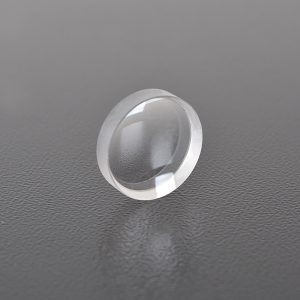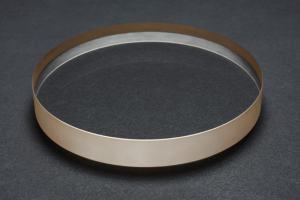
Telescope Lens Factory: the Core of Precision Optical Manufacturing
From nano-level polishing to multi-layer coating, the “optical heart” of the telescope is born in precision machine tools-each lens carries the ultimate focus of mankind on the universe, through 0.01 micron surface accuracy and 99.9% transmittance, it converts galaxy dust into measurable scientific data.
As an important optical instrument, telescopes are widely used in astronomical observation, military reconnaissance, photography, outdoor adventure and other fields. The manufacturing process of the lens, the core component of the telescope, directly determines the imaging quality and performance of the telescope. This article will take you to an in-depth understanding of the production process, key technologies and importance of the telescope lens factory in the optical industry.
1. Basic functions of the telescope lens factory
The telescope lens factory is an enterprise specializing in the design, manufacture and testing of optical lenses. Its main functions include:
1. Lens design and research and development: According to the use requirements of the telescope, design lenses that meet the optical performance requirements. This includes the calculation and optimization of parameters such as the curvature, thickness, and material selection of the lens.
2. Lens manufacturing: Through precision machining technology, the design drawings are converted into actual optical components. The manufacturing process includes cutting, grinding, polishing, coating and other steps.
3. Quality inspection: Through high-precision testing equipment, ensure that the optical performance of the lens meets the design requirements. Common inspection items include surface roughness, curvature error, transmittance, etc.
4. Customized service: According to the special needs of customers, provide customized lens solutions to meet the needs of different application scenarios.
2. Key technologies for lens manufacturing
1. Material selection
The material of the lens directly affects its optical performance. Common lens materials include optical glass, quartz, calcium fluoride, etc. Different materials have different refractive indices, dispersion characteristics and heat resistance. Choosing the right material is the basis for ensuring lens performance.
2. Precision machining
The manufacturing of lenses requires extremely high precision. First, the raw materials are cut and roughly ground to form a preliminary shape, and then the lens surface is finely ground and polished to achieve nanometer-level flatness. The formula of the abrasive and polishing liquid used in the polishing process is crucial to the final quality.
3. Coating technology
In order to improve the transmittance of the lens and reduce reflection loss, the lens surface usually needs to be coated with one or more layers of optical film. Coating technologies include vacuum coating, ion coating, etc. By precisely controlling the thickness and material of the film, the optical performance of the lens can be significantly improved.
4. Inspection and calibration
After the lens is manufactured, it needs to be evaluated for quality by high-precision inspection equipment. Common inspection equipment includes interferometers, surface profilers, etc. Through these devices, key parameters such as the surface shape, curvature error, and transmittance of the lens can be measured to ensure that it meets the design requirements.
3. Production process of telescope lens factory
1. Design and planning
Lorem ipsum dolor sit amet, consectetur adipiscing elit. Ut elit tellus, luctus nec ullamcorper mattis, pulvinar dapibus leo.
2. Raw material preparation
Select suitable optical materials, cut and rough grind them to form the preliminary shape of the lens.
3. Fine grinding and polishing
Through fine grinding and polishing, the surface of the lens reaches optical grade smoothness. This process requires extremely high precision and stability, and is usually completed by CNC machine tools and automation equipment.
4. Coating treatment
According to the design requirements, the surface of the lens is coated to improve the transmittance and reduce reflection loss.
5. Quality inspection
Use high-precision inspection equipment to conduct comprehensive quality inspection of the lens to ensure that its optical performance meets the design requirements.
6. Packaging and delivery
After the inspection is completed, the lens is cleaned and packaged, and delivered to the customer or enters the next assembly process.
4. The importance of telescope lens factories in the optical industry
Telescope lens factories are a key link in the optical industry chain. The lenses they produce are not only used for telescopes, but also widely used in cameras, microscopes, laser equipment, medical instruments and other fields. With the continuous development of optical technology, the innovations of lens factories in precision manufacturing, material science, optical design and other aspects have promoted the progress of the entire optical industry.
1. Promote technological progress
The innovations of lens factories in manufacturing processes, material research and development, and testing technologies have directly promoted the progress of optical technology. For example, the application of new coating technologies has significantly improved the transmittance and durability of lenses.
2. Meet diverse needs
With the continuous expansion of the application field of telescopes, customers’ demand for lenses has become increasingly diversified. Through customized services, lens factories can meet the needs of different customers and promote the application of telescopes in various fields.
3. Improve product quality
The lens factory ensures that the optical performance of the lens meets the highest standards through strict quality control and high-precision manufacturing processes. This not only improves the imaging quality of the telescope, but also enhances the user experience.
5. Future Development Trends
With the advancement of science and technology, telescope lens factories will face new opportunities and challenges. In the future, the development trends of lens factories may include:
1. Automation and intelligence
With the development of intelligent manufacturing technology, lens factories will gradually realize the automation and intelligence of the production process. By introducing technologies such as robots and artificial intelligence, production efficiency and product quality can be improved.
2. Application of new materials
The research and development of new optical materials will bring more possibilities to lens manufacturing. For example, the application of new materials such as metamaterials and nanomaterials is expected to further improve the optical performance of lenses.
3. Green manufacturing
With the enhancement of environmental awareness, lens factories will pay more attention to green manufacturing. Sustainable development can be achieved by reducing energy consumption and reducing waste emissions.
Conclusion
As the core link of optical manufacturing, the technical level of telescope lens factories directly determines the performance and application range of telescopes. Through precise design, manufacturing and testing, lens factories provide high-quality optical components for telescopes, promoting the continuous advancement of optical technology. In the future, with the application of new materials and new technologies, lens factories will continue to play an important role in the optical industry, providing humans with a clearer and more accurate vision for exploring the universe and observing the world.
Hanzhong Brisun Optics Co., Ltd. Is the high precision optical element manufacturer provides customized production of Various optical lenses, including spherical lens, cylindrical lens, optical window, mirror, prism, filter, metal base mirror and other high-precision optical elements. The base materials include various optical glass, fused quartz, calcium fluoride (CaF2), zinc selenide (ZnSe), germanium (GE), silicon (SI), sapphire, metal and other materials. And provide antireflective film, high reflection film, spectroscopic film, metal film and other optical coatings.
Welcome to OEM and Purchasing!


